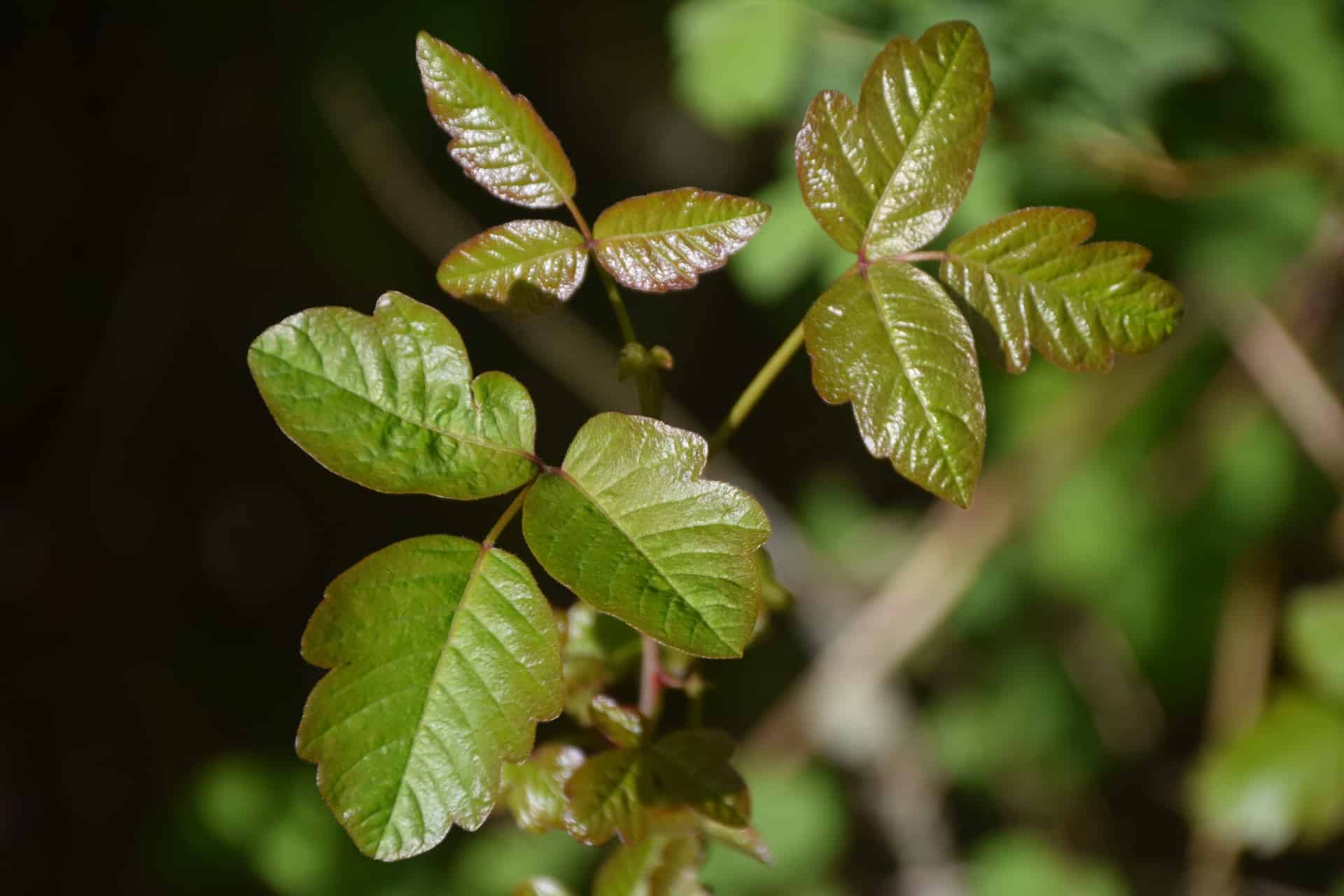First comes the itch.
Then some redness.
Within two or three days, you might start to see some blistering. And before you know what’s happening, you’re a scaly, oozing mess, hot with the inflammation of a poison oak rash.
Poison oak, like its cousins poison ivy and poison sumac, exudes an oily substance called urushiol. Botanists speculate that the chemical evolved as a kind of self-repair mechanism for the plant. Lots of animals eat poison oak, and in order to stave off death by a thousand nibbles, the plant secretes its own liquid bandage.
There is probably something to that. But it doesn’t answer the interesting question of why the substance is so irritating to humans.
In fact, it really is only humans and some sensitive primates that develop the dread rash, the fear of which is enough to keep many from venturing into the forest at all. And while we have no proof of this, we think that’s the point.
If science is comfortable advancing the idea that poison oak has evolved a capacity for self-preservation, one that does not interfere with the dietary habits of the many birds and animals that actively feed upon it, but rather repairs itself so that it may continue to grow, propagate, and thereby continue to feed even more animals, we now have license to suggest that its protective capacity may involve an altruism that our instruments cannot detect.
But our skin and a bit of history and contemplation certainly can.
What other proofs might there be for this botanical altruism?
Poison oak is considered a “pioneer species,” one of the first plants to grow in areas disturbed by recent burns or landscaping. Its roots stabilize the soil, allowing other plants to establish themselves in a process known as succession. We love that term because it really does suggest a recognition that the plant is not operating exclusively out of self-interest. This is why poison oak is often found at the edges of a trail, quite literally holding the line, its tenacious, oily sheen a warning to any who would dare to pass or otherwise interfere with the area’s fragile rewilding.

This theme of protection is evident also in the industrial usage of urushiol, a word derived from the Japanese urushi, or lacquer tree. Like poison oak, the lacquer tree has been classified in the plant genus toxicodendron, Greek for “poison tree.”
The sap of the lacquer tree has been collected for thousands of years by the Japanese. Once applied to a surface and left to cure, the sap hardens into a clear and glossy finish, protecting whatever is coated to such an extent that Japanese lacquerware remains the standard of durability even today.
Even our rashes exude (quite literally) the protective attributes of poison oak.
The irritation is not caused by the urushiol per se, but is rather mediated by it. Molecules of the oil bind with skin proteins and oxidize in a way that makes the affected areas of our skin unrecognizable to our bodies. Sensing a bit of stranger-danger, our immune system launches a response to protect us from the perceived invaders. The deluge of helpful immune factors into the affected area causes the redness, itching, and blistering, a potent reminder from deep within our biology to respect the guardian of the forest.
It is an unfortunate attribute of Western cultures that we will often categorize things in terms of how they align with our desire. We do not want to suffer. We want to be comfortable. We want to go where we want without having to worry about how our coming and going will affect others. When we encounter a plant that irritates us, even if only for a short while, we label it “poison.”
How different is the perspective of others!
The Japanese urushi is said to derive from the words for “beautiful” or “to moisten,” as in to make glossy. Of course those who work with this incredible plant are aware of its transient, irritating properties, but to see past that into its capacity for enduring protection and beauty is an amazing cultural commentary.
For the Muslims, we would like to suggest the plant be appreciated as an indicator, a sign of God’s enduring protection for all creation. Among His names is al-Waliy, the Protecting Friend:
Indeed, my protector (waliy) is God, who has sent down the Book; and He is an ally to the righteous.
Q7:196
Perhaps, like the “poison” oak, Muslims will be a tenacious presence in disturbed places, allowing the marginalized to settle in gentrified locales even as we irritate those with other ideas. This is an appeal to provide protection to the poor, the homeless, the hungry, and the displaced, to give them a chance to establish their roots and reach full flower.
Without doubt, what is poison to some is beauty and enduring protection to others.
Leave a comment below for posterity or join us in the D&T Chautaqua Discord to discuss this post with other adventurous spirits from around the world.

Ma sha Allah, one of your most beautiful observations ever. Nothing is accidental in Allah’s design; this article is a reminder of His command for those whose hearts are alive to ponder the signs of His Wisdom.
Al-hamdu lillah wa shukr lillah!
Subhanallah
Amazing correlation and what a profound ending statement. Mashallah.
May we be honored to protect the poor and vulnerable everywhere!